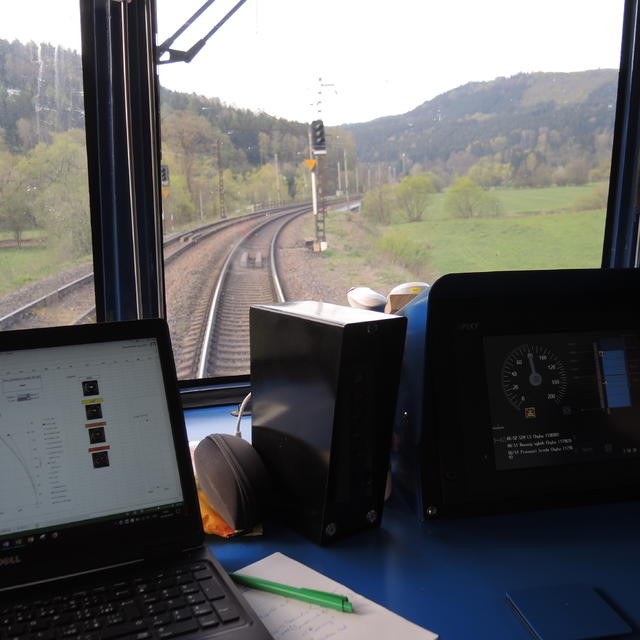ETCS Braking curves: Possible improvements for already braking trains
- Main page
- Other information
- ETCS Braking curves
Would you like to know how to enhance further the safety and driveability of railway operation under the ERTMS/ETCS supervision?
For this, there were two articles about the ETCS Braking curves possible improvements published in SIGNAL+DRAHT (3/2020 and 6/2020). and two simulations prepared – feel free to find them: links under the DMI screenshots below. Both articles have been allowed by the publisher (www.eurailpress.de/sd) to be shared on the AŽD website. The executive summary and the current status of the proposal (after the CCS TSI 2023 publication) were also presented at the AŽD forum at InnoTrans 2024. This presentation has also been made available here below.
For download

The story began when our ETCS experts were approached by our ATO experts within AŽD asking the following simple question: “If we run a train towards a target (e.g., EOA) so that the brake is applied, but only a certain level of brake force is developed (i.e., it is not a full brake application), and the train stops (or, in general, decreases its speed sufficiently) with a constant deceleration well before reaching the target (for example, 30 meters in rear of it), will the ETCS on-board equipment intervene or not?” Already the first analysis revealed that this concern is true and that the ETCS can really intervene, even unnecessarily. The detailed analysis of this behaviour followed with the conclusion that two assumptions used in the ETCS Braking curves calculations cause the curves to be unnecessarily too restrictive.
This analysis of the harmonised ETCS braking curves, which were introduced to the ETCS Baseline 3 specifications, was performed by our AŽD experts together with the Czech Railway Research Institute (VUZ). The two articles, shared here above, present the results. The aim is to initiate a discussion at EU level about a possible change of the ETCS generic functional behaviour. It is clear from the articles that the ETCS on-board equipment [especially if it can conclude from the current train’s deceleration (Aest), speed (Vest), and position (dest) that the train is able to reach a target speed before reaching the target location] should behave in a less constraining manner, compared to what is currently specified. The difference can be seen, for example, in Table 1 of the above-referred article (6/2020), which contains the comparison between today’s ETCS approach (i.e., Baseline 3 Release 2 as well as the brand-new Baseline 4 Release 1) and the approach newly proposed in the articles.
A bit elaborated Table 1 was also presented at the occasion of the AŽD forum at InnoTrans 2024 (presentation from this forum is also shared above). Its main conclusions are also presented here below:
The proposed changes have the capability of improving railway operations, and thus also the capacity (by shifting all the ETCS supervision limits for already braking trains further ahead, closer to the target), and likely also the safety (by limiting the need for the use of Release speed or Override EOA – there is no need for the ETCS on-board equipment to intervene as long as the train is decelerating sufficiently, so the deceleration of the train needs to be monitored and better considered in the ETCS Braking curves calculations – feel free to watch two related simulations – one without the SIGNAL+DRAHT proposal (i.e., without CR1385), the second one with this proposal (i.e., with CR1385) being implemented onboard).
This new approach would be useful when approaching any target, allowing a more relaxed approach. However, it would be especially beneficial when a close approach to the EOA is needed for operational reasons; e.g., a passenger train needs to approach a platform located close to the EOA or a long freight train needs to stop close to the EOA in order to free the points’ area close to the entrance to the station track, which is only a bit longer in length compared to the length of the train. In all these cases, no intentional suppression of the ETCS speed and distance supervision (e.g., by using a Release speed or selection of Override, leading to limited ETCS supervision, increased driver’s responsibility) would be needed.

